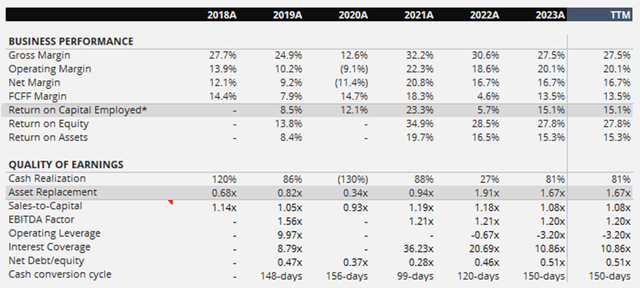Crypto executive warns MiCA regulation will stifle EU crypto companies competitiveness
June 10, 2024 | by stockcoin.net


Ledger’s Global Head of Policy, Seth Hertlein, recently expressed concern over the EU’s impending Markets in Crypto Assets (MiCA) legislation and its potential negative impact on European crypto companies’ competitiveness. Hertlein believes that the cost, complexity, and restrictiveness of MiCA will make it difficult for small companies or startups to thrive, ultimately hindering the growth of EU-based firms. He highlighted that overregulation could lead to a loss of global competitiveness for European companies, contrasting with the less restrictive regulatory environments in emerging markets like APAC, LATAM, and Africa. With MiCA set to become effective by June 30, 2024, stakeholders are gearing up for the regulatory changes, hoping to navigate the challenges posed by the new legislation.

Introduction
The impending Markets in Crypto Assets (MiCA) legislation in the EU has stirred up concerns among crypto executives regarding its potential impact on the competitiveness of European crypto companies. Seth Hertlein, the Global Head of Policy at Ledger, warns that the stringent regulations proposed under MiCA might hinder the growth and innovation of crypto startups in the region. In this article, we delve into the potential ramifications of MiCA on the EU crypto landscape and explore varying perspectives on the regulatory framework.
Analyzing Robinhood’s Acquisition of Bitstamp
Robinhood’s recent acquisition of the crypto exchange Bitstamp has sparked debates within the crypto community regarding the implications of MiCA on the industry. While some view the acquisition as a positive sign of the sector’s maturity and expansion, others like Seth Hertlein perceive it as an early indicator of the challenges posed by MiCA regulations. Hertlein argues that MiCA, coupled with additional regulations, could hinder the ability of European firms to compete on a global scale.
Critique of MiCA’s Impact on European Crypto Firms
Hertlein’s criticism of MiCA revolves around its potential to create burdensome regulatory hurdles for small and medium-sized crypto enterprises in the EU. The high costs, complexity, and constraining nature of the legislation could deter innovative startups from flourishing in the region. By emphasizing the adverse effects of overregulation, Hertlein highlights the importance of striking a balance between regulatory oversight and fostering competitiveness in the crypto sector.
MiCA Implementation Timeline
As MiCA is set to become effective by June 30, 2024, stakeholders across the EU are gearing up for the regulatory transformation. The legislative framework aims to provide clarity and regulatory certainty for crypto industry participants, mirroring the growing calls for robust regulatory frameworks worldwide. With specialized rules for stablecoin issuers and licensing requirements for crypto-assets service providers (CASPs) on the horizon, the crypto landscape in the EU is poised for significant changes.
Preparing for Regulatory Changes
Major crypto exchanges and platforms are already adjusting their operations to comply with the forthcoming MiCA regulations. Companies like Binance and OKX have announced measures to align with the new rules, such as restricting unauthorized stablecoins and discontinuing support for specific trading pairs within the European Economic Area (EEA). These proactive steps signify a proactive approach towards regulatory compliance and adaptation to the evolving regulatory landscape in the EU.
Varied Implementation Across EU Member States
While the EU has set a uniform deadline for MiCA implementation, the enforcement and implementation timelines may vary across individual member states. National authorities are tasked with ensuring compliance with the regulations and overseeing the transition process for crypto businesses operating within their jurisdictions. By the end of December 2024, additional MiCA regulations, including licensing requirements for CASPs, will come into effect, further shaping the regulatory environment for cryptocurrencies in the EU.
Global Competitiveness and Regulatory Challenges
The contrasting views on MiCA’s impact reflect the broader debate surrounding regulatory frameworks in the crypto industry. While some advocate for stringent regulations to enhance investor protection and market integrity, others argue that excessive regulatory burdens could stifle innovation and hinder the growth of emerging technologies. As European crypto firms navigate the evolving regulatory landscape, striking a balance between regulatory oversight and fostering competitiveness remains a critical challenge for policymakers and industry stakeholders.
Opportunities in Emerging Markets
Hertlein’s assertion that emerging markets offer unique opportunities for crypto innovation underscores the potential for growth beyond traditional regulatory constraints. Regions like Asia-Pacific (APAC), Latin America (LATAM), and Africa present fertile ground for crypto adoption and technological advancement due to their lower regulatory burdens and openness to innovation. By embracing regulatory clarity and fostering a conducive environment for crypto innovation, these regions could leapfrog established markets and become leading hubs for crypto development and adoption.
In conclusion, the MiCA legislation represents a pivotal moment for the crypto industry in the EU, shaping the regulatory landscape and influencing the competitiveness of European crypto firms. The divergent perspectives on MiCA underscore the complex interplay between regulation, innovation, and global competitiveness in the rapidly evolving crypto sector. As stakeholders navigate the regulatory complexities and adapt to the changing regulatory environment, finding a harmonious balance between regulatory oversight and fostering innovation will be crucial for the continued growth and resilience of the EU crypto ecosystem.

RELATED POSTS
View all





